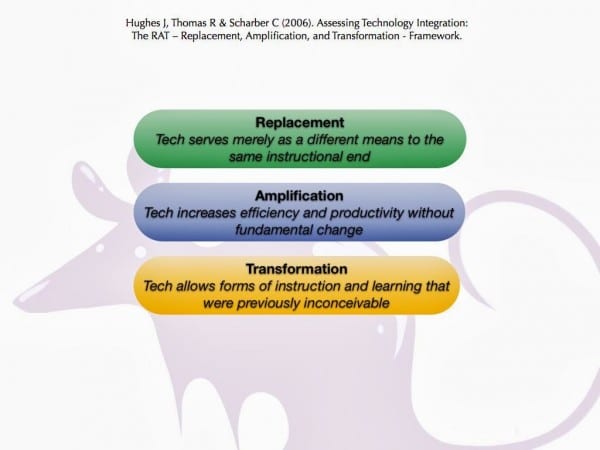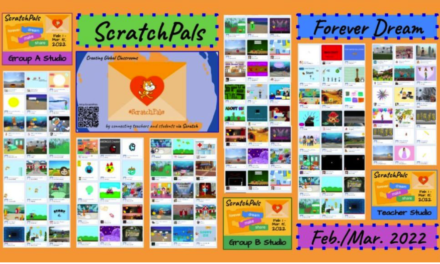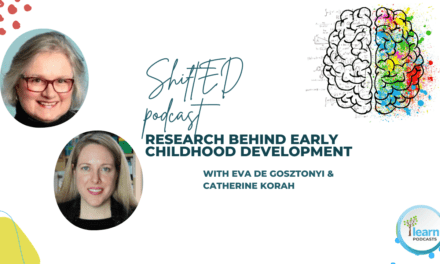How are you using technology with your students? Tell us below or tweet @learnquebec.
A new year – I like taking time to take stock of where I am in life. Have I accomplished previous goals? Do I need to tweak them? Establish new goals? Now is a good time to reflect on how best to reach your students (though I am sure it does not take a new year for you to do that; it is a constant for teachers).
An area of interest for me has always been the use of technology in the classroom. How are you using technology with your students? The answer to this question often depends on the availability of technology and often, how comfortable you are with technology.
Using technology is not about jumping on a bandwagon. Nor is it about using technology just to say you use technology. It is about seeing ways that technology can enhance the teaching / learning experience. Pedagogy always comes first! There are several models that can help you think about technology use: TPACK and SAMR are two that are used a lot. SAMR stands for
Substitution
Augmentation
Modification
Redefinition
At the substitution level, technology is used for a task that could be done without it. An example would be writing with a word processor instead of on paper or printing out a quiz from the computer and then filling it in). The task remains the same. There is no added benefit to using technology. Tasks are often driven by the teacher.
At the augmentation level, there is an added benefit. A student uses the tools in the word processor to check spelling or grammar. The teacher prepares a quiz with Google Forms so the student can get fast feedback regarding their understanding of a concept. These are still tasks that are generally done in a classroom
At the modification level, the tasks begin to change with the use of technology. The students are able to do things that would not be possible without technology. An example would be using Google Docs to write. Students could share their document with others and get peer feedback, or they could even collaborate on a project. These artifacts could be shared via a blog so that they have an authentic audience – they are writing not just for the teacher.
At the redefinition level, the tasks are completely different – students may create documentary videos, collaborate on projects with other students around the world. They use technology to contact experts;
You can learn more about SAMR in this video.
I recently came across another way of assessing technology use which uses the acronym RAT – it is a simpler version of the SAMR model. I learned about it from the Digital Literacy Blog (well worth a read).
There are just 3 levels:
R :: replacement | redundant | retrograde
A :: augmented | average | acceptable
T :: transformed | terrific | tremendous
The adjectives were added by the author of the Digital Literacy Blog. This is a slightly simpler way of looking at how you are integrating technology.
While one should aim to plan at least some of your classroom activities to be at the transformative level, there are certainly times when the other levels are useful. A quick class quiz using Google docs may be useful. Not all writing can lead to video productions or other complex artifacts; sometimes a word-processor is just what you need. And, as in anything you do, if you find yourself at mainly the substitution or replacement level, don’t feel you have to take a leap to suddenly planning everything at the transformative level. Baby steps are fine!
So here’s to goal-setting and new challenges for 2015. But remember to make them the kind of goals that can actually be realized.
Here are some interesting reads to help you reflect on your teaching and learning with technology:
SAMR Success is not about tech
http://ipad4schools.org/2014/02/04/samr-success-is-not-about-tech/
Curriculum and Learning: Examples from the Classroom
http://coachescorner.rchk.edu.hk/modelstheories.html
Assessing Technology Integration: The RAT – Replacement, Amplification and Transformation – Framework by Dr. Joan Hughes, Dr. Ruth Thomas and Cassie Scharber
http://www.slideshare.net/joanhughes/hughes-scharber-site2006







